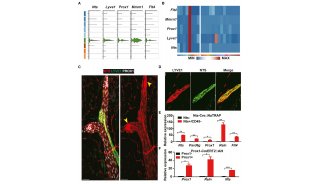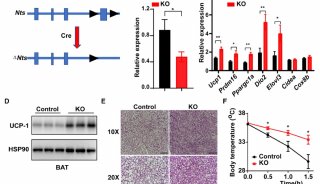Erk and PI-3 Kinase Are Necessary for Collagen Binding in Corneal Epithelia

Activation of the MAPK kinase pathway has been identified as a mechanism that integrins use to regulate gene expression leading to cell shape changes during cell spreading or migration Epithelial cells respond to extracellular matrix (ECM) cause integrin-mediated FAK phosphorylation that in turn phosphorylates the surrounding proteins (paxillin, Fyn/shc, and src) and leads to signal amplification. FAK also binds PI-3 kinase and is upstream of the MAP kinase pathway. When MAPkinase or PI-3 kinase was inhibited, actin reorganization was blocked. Src phosphorylates p190RhoGAP, inactivating its GAP function that may allow RhoGTP to stay active longer, promoting further signal amplification. Activated RhoGTP binds to downstream kinases such as Rho-associated coiled coil-containing protein kinase (p160ROCK) and p140 diaphanous (p140Dia) to increase actin polymerization and contraction. Actin reorganization assists integrin clustering, allowing more ECM binding that increase FAK phosphorylation and other signal transduction events.
Contributor:
REFERENCES: Chia Lin Chu, Wende R. Reenstra, Daniel L. OrLow, and Kathy Kay Hartford Svoboa . Erk and PI-3 Kinase are necessary for collagen binding and actin reorganization in cornel epithelia. Investigative Ophthalmology & Visual Science, October 2000 vol. 41, No. 11. P3374











